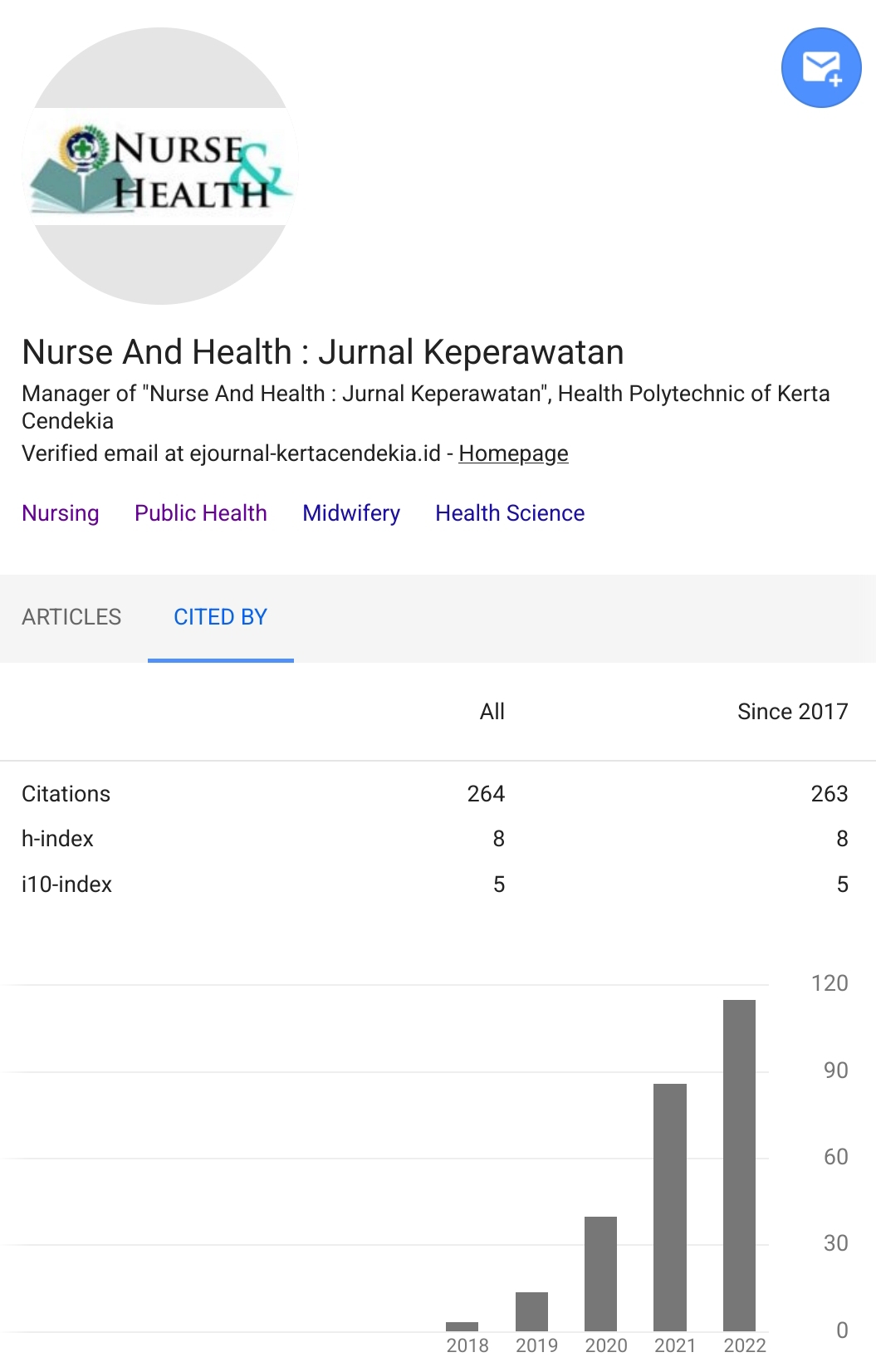ASSOCIATION BETWEEN DURATION AS A FISHERMAN, DISTANCE OF HEALTH FACILITIES AND SMOKING WITH PTERYGIUM'S DISEASE IN FISHERMAN IN BENGKULU
Abstract
Background: Fishermen are a high risk group for developing pterygium. The high frequency of exposure to UV, wind, dust and sand when working makes the prevalence of pterygium among fishermen quite high. The city of Bengkulu, which is geographically located on the west coast of Sumatra Island which is directly facing the Indonesian Ocean, makes the majority of its population work as fishermen. Objectives: This study aims to determine the relationship between duration of being a fisherman, distance to health facilities and smoking with pterygium disease in a group of fishermen in, Bengkulu. Methods: Analytical observational research with case control design. The sample of 120 fishermen consisted of 40 cases and 80 controls, because researchers used a case-control ratio of 1:2. Sampling using purposive sampling method. The dependent variable was pterygium disease. Independent variables of duration as a fisherman, distance of health facilities and smoking. The research instrument uses a structured questionnaire that has been tested for validity and reliability with Alpha Cronbach value (0.996) > r table. Data were analyzed by Chi Square. Results: Based on the research results, it was found that there was a significant relationship with duration as a fisherman (? 21 years) (OR = 3.980; 95%CI = 1.404-11.284; p = 0.006) with pterygium disease. There is no relationship between smoking (OR = 1.246; 95%CI = 0.559-2.778; p = 0.590) with pterygium disease. There is a significant relationship between the distance of health facilities (OR = 5.133; 95%CI = 2.249-11.715; p = 0.000) with pterygium disease. Conclusion: The length of time working as a fisherman increases the risk of developing pterygium disease as the frequency of exposure to UV, dust, wind and sand increases. It is necessary to use personal protective equipment to reduce the risk of exposure and education from health workers so that the public can take good preventive measures.Downloads
References
American Academy of Ophthalmology. (2017-2018). Basic and Clinical Science Course, section 8, External Disease and Cornea, p: 112.
Ardianty, Dara Phonna & Maulina, Nora. (2015). Hubungan Faktor Risiko Dengan Kejadian Pterygium di Poliklinik Mata Badan Layanan Umum Daerah Rumah Sakit Umum Cut Meutia Kabupaten Aceh Utara Tahun 2015. Jurnal Kedokteran dan Kesehatan Malikussaleh.
Erry, Mulyani Ully Adhie, Susilowati, Dwi. (2011). Distribusi Dan Karakteristik Pterigium Di Indonesia. Buletin Penelitian Sistem Kesehatan- Vol 14 No.1 Januari 2011: 84-89.
Kemenkes. (2014). Situasi gangguan penglihatan dan kebutaan. Pusat Data dan Informasi Kemenkes RI.
Kanski, JJ. (2002). Pterygium In Clinical Ophatmology: Asystematic Approach. 6th ed. Butterworth. Elsevier Ltd. P.82-3.
Laszuarni. (2010). Prevalensi Pterigium di Kabupaten Langkat. Tesis. Fakultas Kedokteran Universitas Sumatera Utara.
Lemeshow, S. (1997). Besar Sampel dalam Penelitian Kesehatan. Gadjah Mada University: Yogyakarta.
Lemeshow, S, Lwanga, S.K. (1997). Sample Size Determination in Health Studies A Pratical Manual, World Health Organization, Geneva.
Marcella, Maria. (2019). Manajemen Pterigium. Continuing Medical Education. CDK Edisi Suplemen-1/Vol.46 Th. 2019.
Noor, J. (2011). Metodologi Penelitian Skripsi, Tesis, Disertasi, dan Karya Ilmiah. Jakarta: Kencana.
Novitasari, Andra. (2017). Buku Ajar Sistem Indera Mata. Fakultas kedokteran Universitas Muhammadiyah Semarang. Unimus press. http://repository.unimus.ac.id
Pemerintahan Kota Bengkulu. (2019). Portal Resmi Pemerintah Kota Bengkulu. https://bengkulukota.go.id/
Persatuan Dokter Spesialis Mata Indonesia (PERDAMI). (2019). Vision 2020 The Right To Sight. Global Health Partnership For Eyecare. https://perdami.id/vision-2020-indonesia/
Rany, Novita. (2017). Hubungan Lingkungan Kerja Dan Perilku Nelayan Dengan Kejadian Pterygium Di Desa kemang Kecamatan Pangkalan Kuras kabupaten Pelalawan. Journal Of Community Health. KESKOM.2017;3(4):153-158. http://jurnal.htp.ac.id
Riset Kesehatan Dasar (RISKESDAS). (2013). Badan Penelitian Dan Pengembangan Kesehatan Kemeterian Kesehatan RI Tahun 2013.
Voughan & Asbury. (2010). Oftalmologi Umum. Edisi Ke-17. Jakarta: EGC.
Zhong, Hua, Xueping, C, Tao, W, Xianchai, L, Xun, L, Jun, L, Ning, C, Juanjuan, L, Xiaodan, S, Yongming, Y, Minbin, Y, Yuansheng, Y. (2012). Prevalence of and risk factors for pterygium in rural adult Chinese populations of the Bai Nationality in Dali: The Yunnan minority eye study, Investigative Ophthalmology & Visual Science; 53 :6617-6621.
Authors who publish with Nurse and Health: Jurnal Keperawatan agree to the following terms:
- Authors retain copyright licensed under a Creative Commons Attribution-NonCommercial 4.0 (CC BY-NC 4.0), which allows others to remix, tweak, and build upon the authors' work non-commercially, and although the others' new works must also acknowledge the authors and be non-commercial, they don't have to license their derivative works on the same terms.
- Authors are permitted and encouraged to post their work online (e.g., in institutional repositories or on their website) prior to and during the submission process, as it can lead to productive exchanges, as well as earlier and greater citation of published work (See The Effect of Open Access). Authors can archive pre-print and post-print or publisher's version/PDF.























